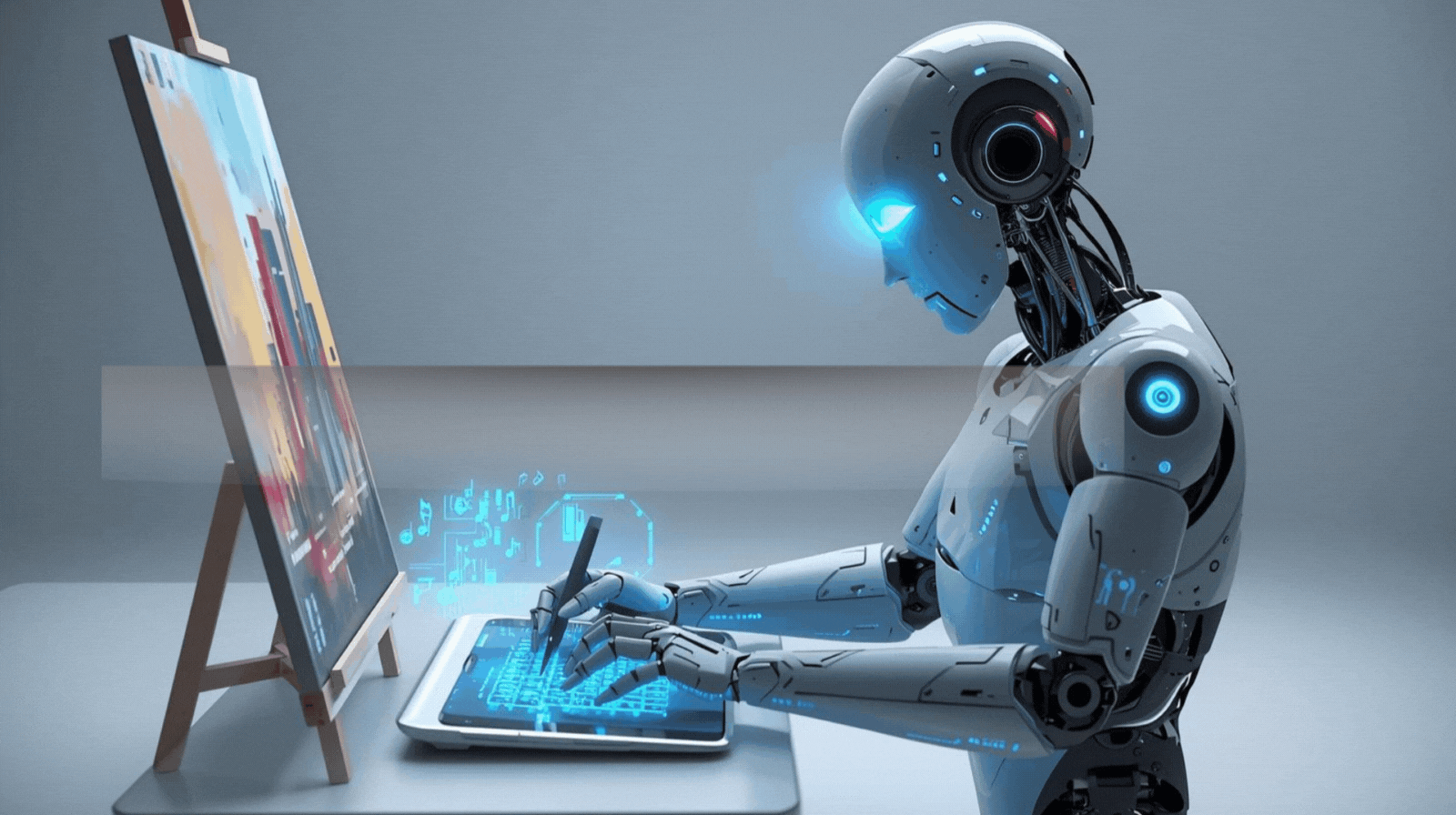Introduction: A Spark of Digital Creativity
Imagine asking an AI image creator to paint something that hasn’t ever existed anywhere, for example, lush vegetation over a Martian landscape. Sounds like something out of a sci-fi flick, right? Or consider asking AI to write a heartfelt poem about the joy of a perfect cup of coffee with sunset by the window and a book on read. Another figment of imagination that only humans can experience, right? Well, it’s not. It’s generative AI, which is rapidly simplifying the way we create things. In simple words, generative AI is a type of artificial intelligence that learns from vast amounts of data and then uses that knowledge to generate new content, such as images, text, and music—it can create almost anything! It’s like that one incredibly talented all-rounder student who has studied every masterpiece ever created and is now ready to create their own. But here’s the crucial point to remember: it’s a student, not a master.
How Does It Work? Learning the Rules of the Game
Are we really teaching AI to draw and to write? No! Think of it this way: instead of programming an AI to draw a specific image, we show it thousands of images of cats, dogs, landscapes, and everything in between. AI then analyzes these images, learns the patterns, and then uses that knowledge to create its own unique images according to the prompt it is given. It is similar to how a kid learns to draw by observing and practicing many times. This “learning” process, while being very complex, is essentially about identifying patterns and applying them. While the AI can mimic artistic styles and writing techniques, it doesn’t possess the magic of lived experiences, emotions, and unique perspectives that drive human creativity.
Examples of Generative AI in Action: A Powerful Tool, Not a Creator
Let’s take a look at some examples. You must have been amazed at some point when you almost thought the art was created by a human when it was actually AI-generated. You’ve probably read articles written by AI that look incredibly realistic or give the flavor of some original writer. You might have even heard music composed by an AI. These are impressive feats, no doubt. Generative AI is being used to design new products, create engaging marketing content, and, to your surprise, even develop new drugs. It’s a powerful tool for visual artists who need inspiration, a great way for writers to get over writer’s block, and a helpful assistant for musicians who are looking for new sounds.
For instance, at a small scale, a graphic designer might use AI to generate numerous variations of a logo, providing a starting point for their creative process. This might help mold the initital creative human thought in many ways, based on the data it has been trained on. A homeowner redecorating a room could use AI to visualize different furniture arrangements, saving a lot of time and human effort. A social media manager can use AI to create unique captions for each post while still adding their own brand tagline, as in finding different ways to showcase it. A musician can use AI to generate a backing track, then add their own melody and lyrics.
In order to drastically cut down on the time and expense of drug development, pharmaceutical companies are employing AI on a larger scale to produce and screen millions of possible drug ideas. AI is used by architects to create a variety of architectural designs that optimize space and energy use. AI is used by urban planners to model traffic flow, which helps build more sustainable and effective cities. AI is used by engineers to create novel materials with certain qualities, like lightweight metals for use in aircraft. AI is used by game developers to build expansive and varied game worlds, but they still depend on human authors to craft gripping plots.
However, consider this: an AI can generate a technically perfect painting, but can it capture the raw emotion of a human artist pouring their heart onto the canvas? An AI can write a grammatically flawless story, but can it convey the depth of human experience and human empathy? It can create a catchy jingle, but can it express the soul of a musician’s life experiences? The answer, for now, is no. Generative AI excels at replicating patterns, but for obvious reasons, it lacks the genuine human spark.
The Impact and Implications: A Collaboration, Not a Competition
This leads us to the important conclusion: human creativity cannot be replaced by generative AI. It serves as an assistant, a tool, and a collaborator. It can assist us in becoming more inventive, efficient, and creative. An architect, for instance, can utilize AI to create several building ideas in a matter of minutes, freeing up time to concentrate on the project’s human-centered elements, such as the design’s emotional effect and spatial flow.
There are ethical issues, of course. Concerns like deep fakes, copyright violations, and the possibility of employment displacement must be kept in mind. However, we should concentrate on using these developments sensibly and morally rather than being afraid of them. We must create policies and procedures to guarantee the application of generative AI.
The Future of Generative AI: Human and Machine, Working Together
We may anticipate seeing much more amazing uses as generative AI develops further. AI-driven technologies may be used to assist us in constructing tailored educational programs, novel medical interventions, or even long-term answers to the climate crisis. However, despite AI’s increasing sophistication, it will never be able to replicate the distinctive characteristics that define humanity, such as our feelings, experiences, intuition, and capacity for profound interpersonal connection.
Humans and robots collaborating is the way of the future for creativity, not machines taking over. It’s about leveraging AI as a tool to boost human creativity, investigate uncharted territory, and build a better future. The human touch is what really brings writing, music, and art to life, even though generative AI is a potent force. In the hands of the artist, it is a potent brush, not a substitute for the artist.



